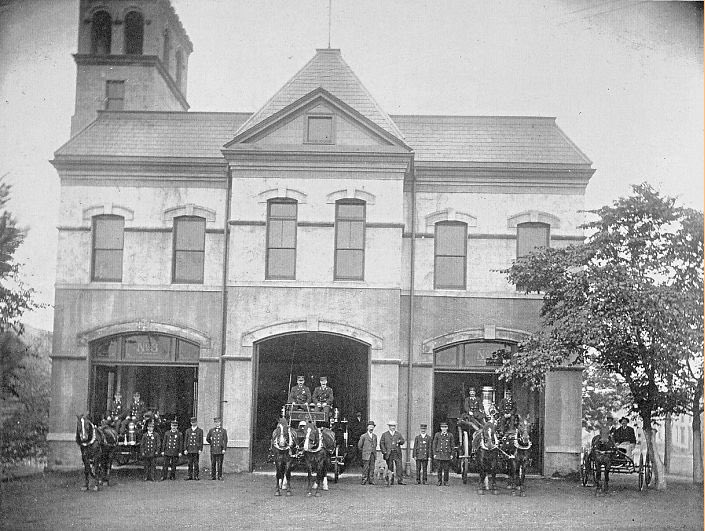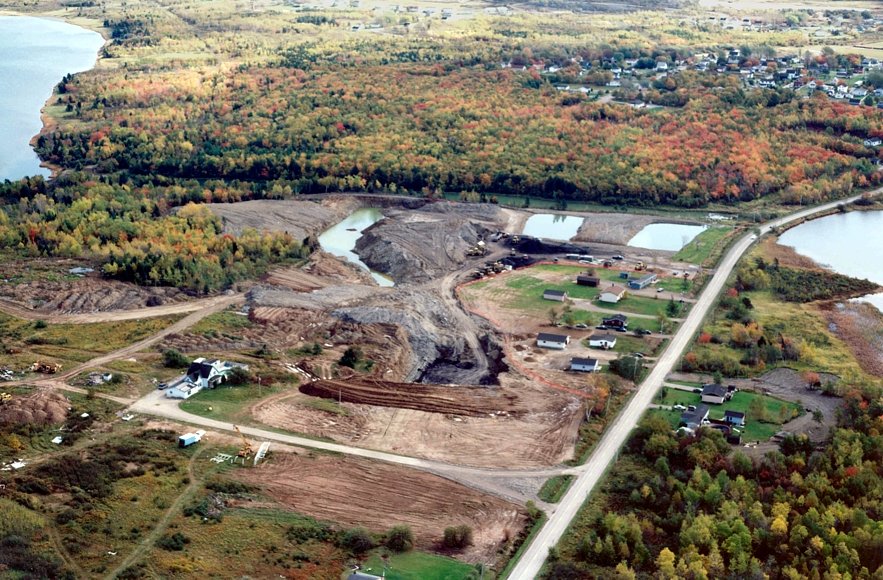One of #NovaScotia’s earliest gold discoveries took place on June 13, 1861 when James Bowling found gold-bearing quartz veins on Drum Head at #TheOvens, #Lunenburg County.
Here's the history of The Ovens’ #gold rush!
#nspoli #cbpoli
@ovensnaturalpark @TourismNS @SuzanneLCNS

Here's the history of The Ovens’ #gold rush!
#nspoli #cbpoli
@ovensnaturalpark @TourismNS @SuzanneLCNS


A month later John Lawson, then-Government Surveyor for the county, found #gold in the sand on the shore. The finds triggered #TheOvens’ gold rush!
Within two months 600 people were seeking their fortunes at The Ovens...
#nspoli #cbpoli #novascotia @SuzanneLCNS @TourismNS
Within two months 600 people were seeking their fortunes at The Ovens...
#nspoli #cbpoli #novascotia @SuzanneLCNS @TourismNS

...so-named because of the dozen sea caves in the cliffs. (The caves eroded naturally but one, Tucker's Tunnel, was extended by mining.) A small town with grocery stores, restaurants, a bank and a hotel quickly sprang up.
#nspoli #cbpoli #novascotia
#nspoli #cbpoli #novascotia

Over 1000 people eventually went to #TheOvens during its #gold rush.
While there was also mining on the cliffs, most of the #gold was found in the sand at Cunard Cove, named after William Cunard, son of Nova Scotia shipping magnate Samuel Cunard.
#nspoli #cbpoli #novascotia
While there was also mining on the cliffs, most of the #gold was found in the sand at Cunard Cove, named after William Cunard, son of Nova Scotia shipping magnate Samuel Cunard.
#nspoli #cbpoli #novascotia

(See tomorrow’s post to see how Samuel was involved in mining.)
William Cunard acquired most of the claims in the cove, part of the 70 or so claims he staked at #TheOvens. He paid five pounds per year for each claim, a claim being 30x33 feet.
#nspoli #cbpoli #novascotia
William Cunard acquired most of the claims in the cove, part of the 70 or so claims he staked at #TheOvens. He paid five pounds per year for each claim, a claim being 30x33 feet.
#nspoli #cbpoli #novascotia

Cunard quickly formed a company, attracting investors by showing off a vial of #gold specimens referred to as “buck shot” – small pieces of gold of all shapes. The company’s stock consisted of twelve shares of $400 each.
#nspoli #cbpoli #novascotia
#nspoli #cbpoli #novascotia

Cunard travelled to and from #TheOvens on one of his own steamers, hauling men, a dredging machine and what was described as “every imaginable appliance.”
#Gold was also found to the west along the north shore of #RoseBay.
#nspoli #cbpoli #novascotia
#Gold was also found to the west along the north shore of #RoseBay.
#nspoli #cbpoli #novascotia

Things went very well until the end of 1862, when the #gold along the shoreline started to deplete. In total around 2,500 ounces were produced from the area in 1861-62.
#nspoli #cbpoli #novascotia
#nspoli #cbpoli #novascotia

A small amount of work was done at #TheOvens during the rest of the 1860s but they were then quiet until 1896 when A. J. Cowie reported recovering 5 ounces of #gold from 26 tons or ore.
#nspoli #cbpoli #novascotia
#nspoli #cbpoli #novascotia

In 1897-98 the Acadia Gold Reduction Company built a crusher, blacksmith shop and accommodations but only extracted 78 ounces of #gold – not enough to justify the costs of the infrastructure – and the company failed.
#nspoli #cbpoli #novascotia
#nspoli #cbpoli #novascotia

Unusual for #NovaScotia, most of the #gold extracted came from the placer deposits on the shore, not the quartz veins in the cliffs. As we discussed in our June 27 post, most Nova Scotia gold is in quartz veins hosted in bedrock, like those in the cliffs at #TheOvens.
#nspoli
#nspoli

Placer (aka alluvial) deposits are gold eroded from bedrock deposits and became concentrated in rivers and shorelines by water. At #TheOvens, the same wave action that created the sea caves also eroded the bedrock gold deposits in the cliffs and left much gold along the shore. 

This made it possible for prospectors to pan for gold - scooping up water, sand and gravel in a pan and swirling it around. The #gold, which is very heavy, settled on the bottom of the pan while the lighter gravel and sand washed over the side.
#nspoli #cbpoli #novascotia
#nspoli #cbpoli #novascotia

This was a simple but effective small-scale method of extracting the #gold.
#NovaScotia has some placer gold but very little compared to places like California and the Yukon. The reason is Nova Scotia was repeatedly covered with glaciers in the past 100,000 years...
#nspoli
#NovaScotia has some placer gold but very little compared to places like California and the Yukon. The reason is Nova Scotia was repeatedly covered with glaciers in the past 100,000 years...
#nspoli

...until the last ice age ended 10,000 years ago. The glaciers dragged sediments and rocks along with them as they moved, scattering the #gold of any placer deposits that existed prior to the glaciers.
#nspoli #cbpoli #novascotia
#nspoli #cbpoli #novascotia

#TheOvens is one of the few places in #NovaScotia where placer #gold has been found in significant quantities, due to The Oven’s bedrock deposits being in cliffs right on the shore.
Despite its obvious potential, a couple things went wrong at The Ovens.
#nspoli #cbpoli
Despite its obvious potential, a couple things went wrong at The Ovens.
#nspoli #cbpoli

First, too much money was spent on infrastructure like stores and accommodations, and not enough was spent on mining operations and equipment. There was too much cost and not enough profit for mining to be sustainable.
#nspoli #cbpoli #novascotia
#nspoli #cbpoli #novascotia

Second, the government establishing such small claims – 30x33 feet – made it difficult for anyone to mine profitably since each claim holder had so little land to work (Cunard was an exception).
#nspoli #cbpoli #novascotia
#nspoli #cbpoli #novascotia

Small claims also hindered investment in the mining equipment that could have made the quartz veins in the cliffs profitable so progress on the cliffs was limited. The government learned from this mistake and fixed it in an 1862 law...
#nspoli #cbpoli #novascotia
#nspoli #cbpoli #novascotia

...that allowed larger claims sizes (150x250 feet was the most common).
Third, a lack of environmental regulation allowed Cunard to dredge the beach and ship most of the sand to England for processing. This left it the rocky beach that is there today.
#nspoli #cbpoli #novascotia
Third, a lack of environmental regulation allowed Cunard to dredge the beach and ship most of the sand to England for processing. This left it the rocky beach that is there today.
#nspoli #cbpoli #novascotia

Today mining is 1 of the most stringently-regulated industries in #NovaScotia and environmental impacts like this are prevented. Mining companies also have to post reclamation bonds (money in escrow, basically) before mining starts to ensure sites are properly reclaimed.
#nspoli



#nspoli




#TheOvens is now a beautiful park and campground where you can still try your luck panning for #gold!
#nspoli #cbpoli #novascotia #staycation

#nspoli #cbpoli #novascotia #staycation


• • •
Missing some Tweet in this thread? You can try to
force a refresh



























